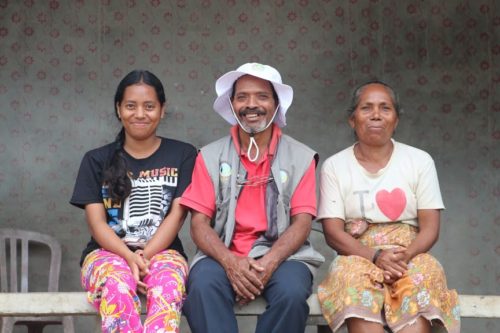
Culture & Traditions
The People
The people of Ataúro are descended from three clans: the Adade, the Humungili, and the Manroni, each with their own dialect, songs, music, and dances. The unique heritage of the island thus reflects many influences – the mixture of clans, the animist beliefs inherited from ancient times, the legacy of Portuguese colonization, the more recent Japanese and Indonesian invasions, and the presence of both Protestant and Catholic churches.
Due to Ataúro’s geographic isolation, the island’s experience with colonization was different than the rest of Timor-Leste. During the Portuguese occupation, Ataúro was used as a prison for criminals and political prisoners, from as far away as Africa. During the Indonesian occupation, supporters of the resistance movement and their families were exiled here – to survive or die. As a small island, Ataúro has constantly adapted to new influences and issues as a community. This history has resulted in an outward-looking but conservative culture, strongly influenced by Christianity, which overlays traditional beliefs and practices that are still very much part of daily life.
Visitors are encouraged to learn about the history of our conflict with Indonesia before coming to Timor-Leste, in order to better understand the resilience and persistence of Timorese people. Some excellent books and articles include Beloved Land by Gordon Peake, The Crossing by Luis Cardoso, In the Time of Madness: Indonesia on the Edge of Chaos by Richard Lloyd Parry. The Balibo Five, based on a true story, is also an informative film to watch before your visit.
The Legend
According to the legend, Ataúro was formed by three brothers named Komateu (the oldest), Lekitoko (the younger) and Kutukia (the youngest). As the story goes, these 3 brothers used fish traps to catch fish. Despite their best efforts, the traps remained void of fish yet full of leaves. The island was narrow, and the failed fishing efforts prevented it from growing wider.
Komateu, Lekitoko, and Kutukia stood on the peak of the sacred mountain of Manukoko and shot arrows in different directions. The oldest brother shot his arrow to the north, which fell in Vatuu. He was strong enough that the arrow flew a far distance. Then the younger brother shot the next arrow to the south which fell in Berau. As this brother was not as strong, the arrow did not fly very far. The youngest brother shot the arrow to the east, which fell in Vila. As he was the weakest, the arrow went only a short distance. With the shots fired from their arrows, the island became wider and wider, turning into the Ataúro we know and love today.

The Families of Ataúro

The Cave of Our Lady Mary in Vila

